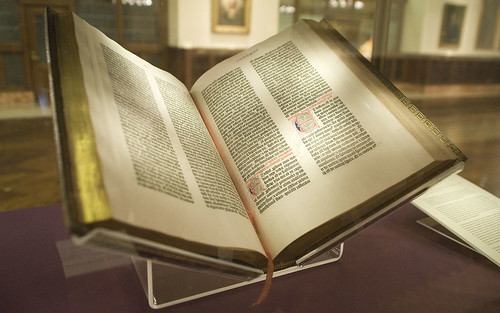 Communications technologies want to move along three continua (which I just learned is awesomely the plural of continuum).
Communications technologies want to move along three continua (which I just learned is awesomely the plural of continuum).They move along an interactivity continuum, from one-to-one interactions toward many-to-many interactions. They move along an immediacy continuum, from synchronous toward asynchronous communication. And they move along a spatial continuum, from being available only locally toward being accessible from anywhere (what I'll call aspatial).
Each major communications breakthrough has moved us further along one or another of these continua.
Language was the first communications breakthrough. Speaking is one-to-some, synchronous, and local.
Writing is also one-to-some and local (you have to have the book to read it), but asynchronous. Written works are persistent, and can be read at any time.
The printing press changed writing to be one-to-many, but it remained local.
The telegraph was the first non-local communication technology, in that for the first time, a message could be transmitted from any distance almost immediately, so that the location of the original message was no longer important. Telegraphs moved backwards on the other two continua, however. They are both one-to-one and synchronous (telegraphs were sent to a specific telegraph office, where someone had to be there to receive them). I would put telephones in this same camp.
Mass media (radio and TV) brought about aspatial, one-to-many communications, but they are still synchronous.
The Internet provides us, for the first time, with communications that are both asynchronous (websites can be viewed at any time, not just when they are created) and aspatial (you can view a website from anywhere). The Internet also enables many-to-many conversations, where lots of people can discuss, organize, etc.
I think that the next step is for the Internet to bring its attributes to other aspects of the world. It is already reaching back to other technologies to make printed works aspatial (e.g., Google Books) and mass media asynchronous (e.g. Hulu or Netflix). It is making buying and selling aspatial (e.g., eBay) and asynchronous (e.g., Amazon).
Image via starfire2k on Flickr